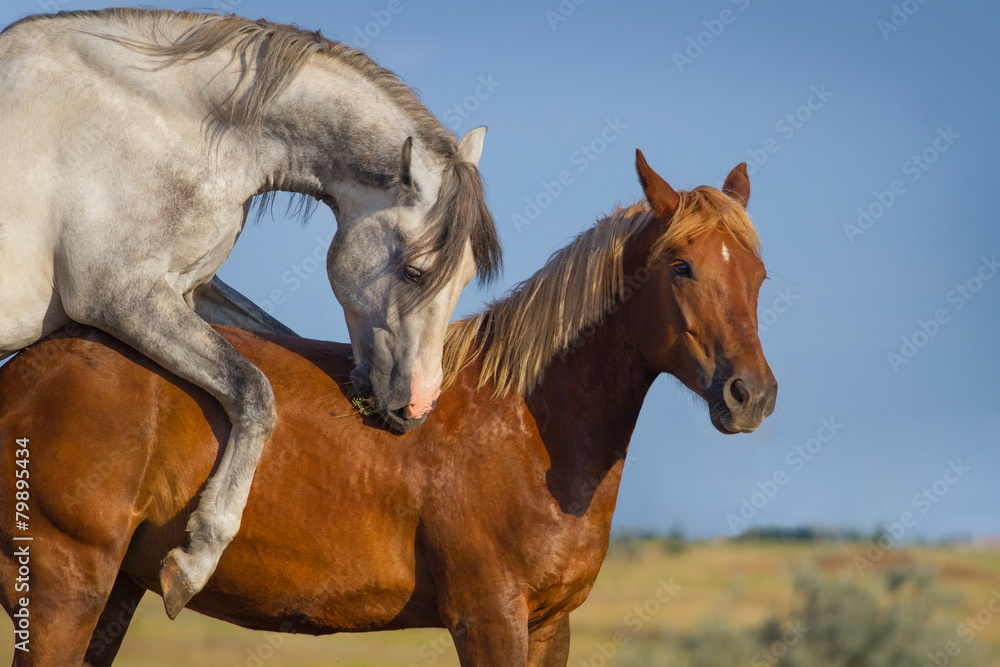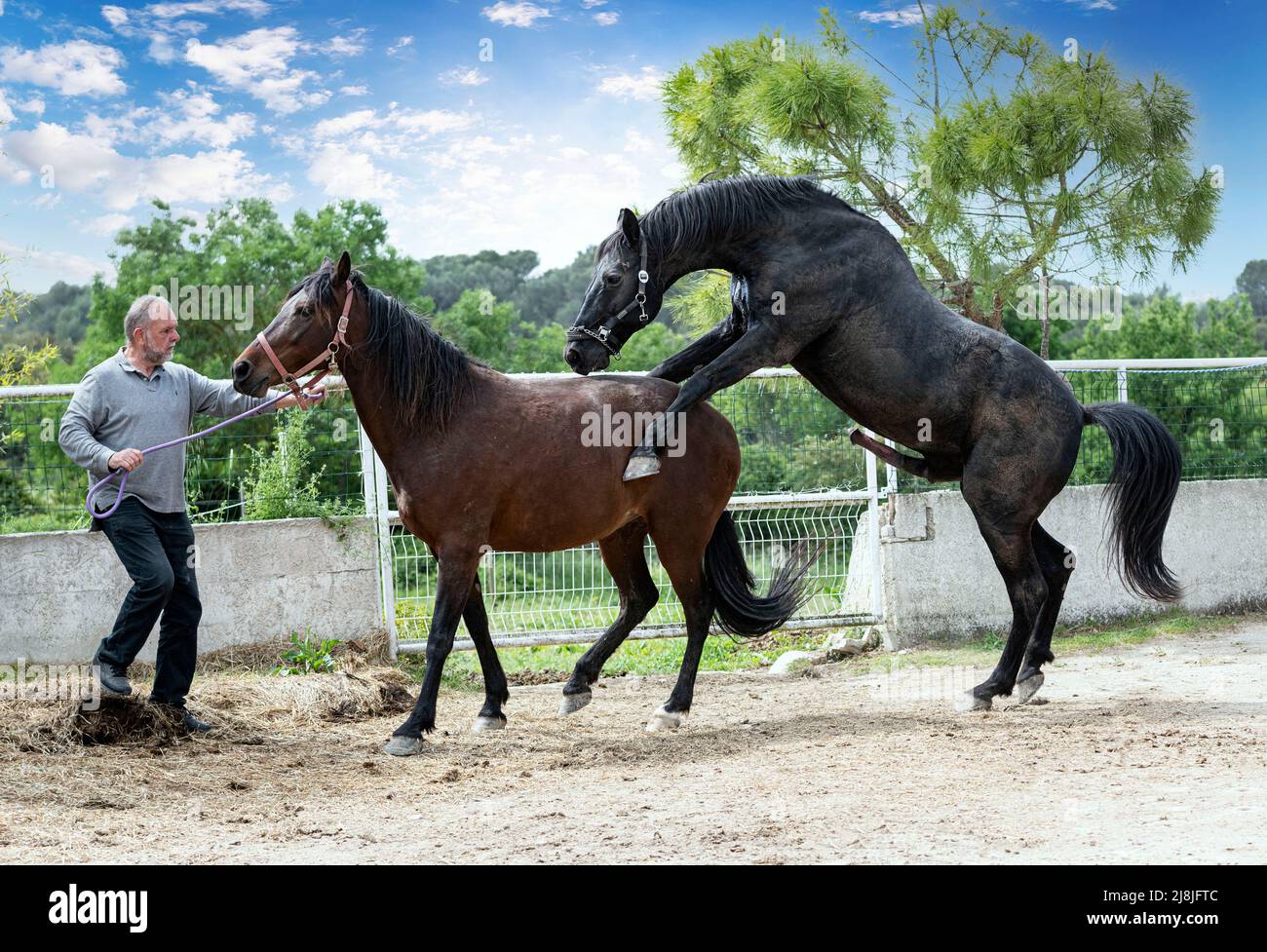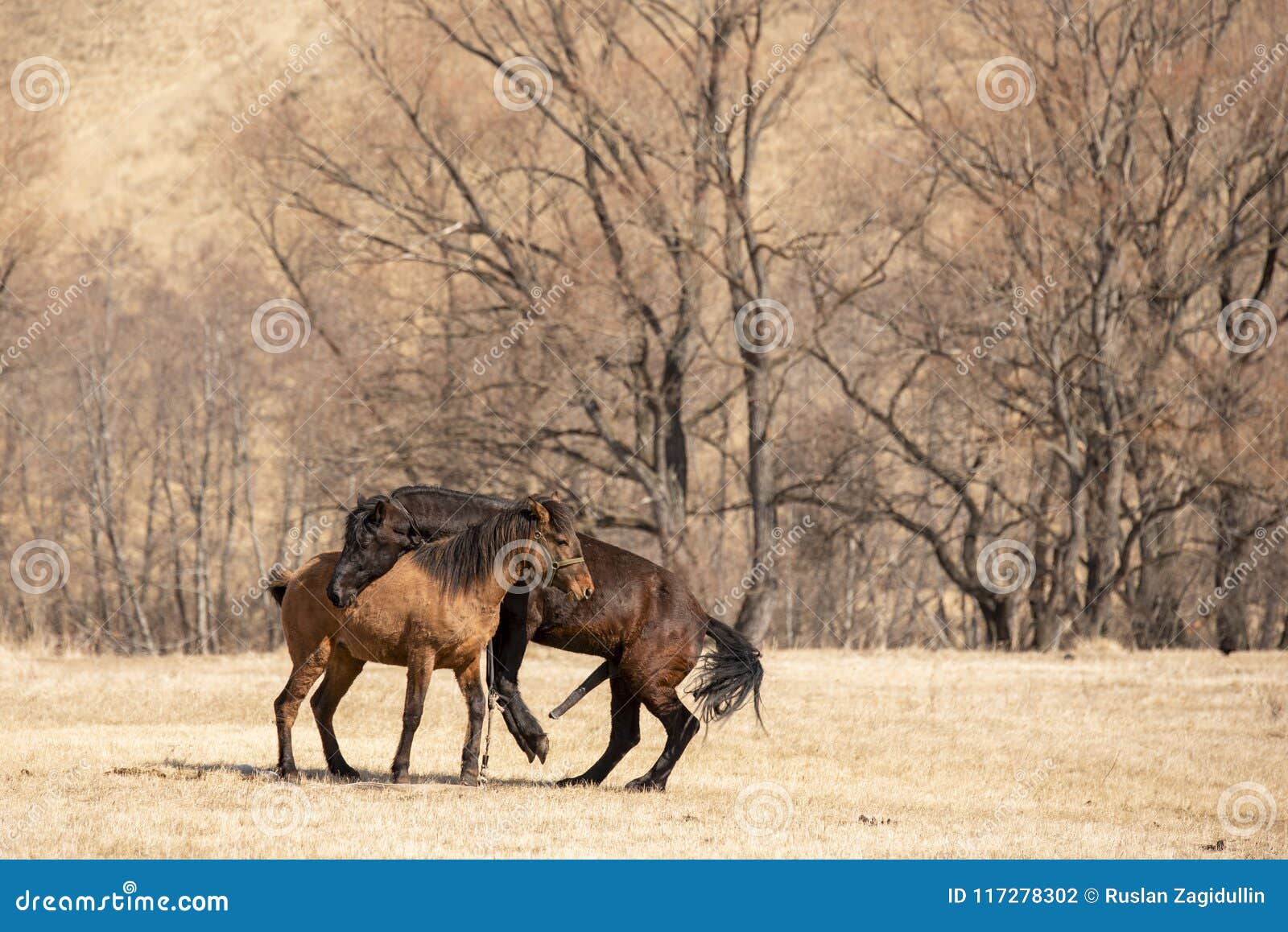Understanding Horses Mating - A Natural Wonder
When we think about the natural world, the way animals reproduce is, you know, a pretty amazing thing to consider. It's a fundamental part of life, and for creatures like horses, it involves a fascinating set of actions and instincts. This whole process, often called horse breeding, is how these magnificent animals bring new life into the world, and it is something that really shows nature at its finest.
For folks who might not be around horses all the time, or perhaps just haven't had the chance to learn about it, the details of how horses mate can seem, well, a bit of a mystery. There's a natural curiosity about it, but sometimes people feel a little hesitant to ask about the specifics. This piece aims to give you a friendly look at how horses reproduce, covering the natural ways they do it and even a little about how people sometimes play a part.
We'll explore the various steps involved, from the initial interactions between a male horse, called a stallion, and a female horse, known as a mare, to the actual act of reproduction. It's a series of actions driven by instinct, careful timing, and, in some respects, even a bit of playful interaction between the animals. Learning about this part of horse life gives us a deeper appreciation for their behaviors and their connection to the natural world.
Table of Contents
- What is the Basic Idea of Horses Mating?
- How Do Horses Mating Rituals Unfold?
- Are There Different Ways Horses Mating Happens?
- What Happens After Horses Mating?
What is the Basic Idea of Horses Mating?
Horse mating, or horse breeding as it's often called, is basically the way these animals make more of their kind. It's a natural cycle, just like in many other creatures with backbones, where a male and a female come together to create new life. The whole thing is driven by a mix of deep-seated instincts, a sense of good timing, and, you know, sometimes a little bit of playful interaction between the two animals. It's a process that has been happening for ages, allowing horse populations to continue through generations.
For those who care for horses, or just find them interesting, getting a grasp of how this all works is pretty important. It helps in understanding their natural ways and, if someone is involved in breeding, it's key to helping the process go smoothly. This natural event is a captivating part of how horses live and behave, showing us the remarkable ways animals ensure their kind keeps going.
The Dance of Horses Mating - Courtship
The very first part of horses mating is often a kind of dance, a series of interactions called courtship. This isn't just about the physical act; it's also about the male and female getting to know each other, so to speak, and deciding if they are ready. During this time, the stallion, which is the male horse, will approach the mare, the female horse, with a particular set of actions. These actions are meant to show his interest and to see if she is open to his advances. It's a period of testing the waters, you might say, where both animals communicate their intentions through body language and sounds.
This phase is very important for setting the stage for what comes next. It allows the mare to signal her readiness, or lack thereof, and helps build a connection between the two. The stallion, basically, tries to win her over, showing he is a suitable partner. It's a natural way for them to assess each other, ensuring that the timing and the willingness are there for a successful attempt at reproduction. So, the courtship is a vital part of the entire sequence of horses mating.
Getting Ready - Reproductive Parts and Horses Mating
To really get how horses mate, it helps to know a little about their body parts involved in making foals. For the male horse, the stallion, his main reproductive parts include the organs that make and store the male cells needed for reproduction. The female horse, the mare, has her own set of parts, including the ovaries where her eggs are kept and the pathways for those eggs to meet the male cells. These parts are, you know, perfectly suited for the job of creating new life.
The mare also goes through a regular cycle, somewhat like a human female's monthly cycle, where her body gets ready for the possibility of having a baby. This time is called the oestrous cycle, and it's when she becomes open to mating. During this period, her body sends out signals, often through scents and behavior, that tell a stallion she is ready. This readiness is a key part of the biological side of horses mating, ensuring that the timing is just right for reproduction to happen. It's all very much connected to their natural rhythms.
How Do Horses Mating Rituals Unfold?
The way horses go about mating is often described as a series of rituals, a kind of dance that has been perfected over many, many years in the wild. It begins with the mare showing she is ready, and then the stallion responding to those signs. The whole sequence is pretty amazing to watch, as it's full of subtle signals and more obvious actions. It’s not just a random event; it's a carefully orchestrated set of behaviors that lead to the creation of new life. So, understanding these rituals gives us a much better idea of how horses interact with each other in this very important way.
These rituals are deeply rooted in their instincts, passed down through generations. They ensure that both animals are willing participants and that the conditions are right for a successful attempt at reproduction. It’s a natural process that truly highlights the communication and connection that can happen between a stallion and a mare. Knowing these steps can really help people who work with horses to better support their natural behaviors.
Early Signs - Mare's Readiness for Horses Mating
A big part of horses mating starts with the mare showing she's ready to accept a stallion. This readiness is tied to her oestrous cycle, and she gives off some pretty clear signs. For instance, she might stand in a particular way, lifting her tail a little to the side, or she might show a different kind of interest in the stallion. She could also urinate more frequently, sometimes in small amounts, which releases scents that stallions can pick up. These are all subtle ways she communicates her state.
When a mare is truly receptive, her behavior changes noticeably. She might become more relaxed around the stallion, perhaps even seeking out his presence. These signals are, you know, vital for the stallion to know when to make his approach. Without these clear indications from the mare, the stallion might not even try, or his attempts might not be successful. So, her readiness is the very first step in the actual process of horses mating.
Stallion's Approach - Behaviors in Horses Mating
Once a mare shows she's open to mating, the stallion's actions become much more focused and clear. He starts to approach her with a purpose, showing his interest in a variety of ways. For example, he might gently rub his nose or mouth along her neck or her sides, almost like a soft nuzzle. He also makes certain sounds, like rhythmic snorts or soft, quiet nickers, which are meant to get her attention and confirm her willingness. These sounds are, basically, part of his invitation.
These behaviors are not just random; they have a specific goal. They help the stallion establish a connection with the mare and also allow him to check if she is truly ready and accepting of his presence. He might also perform a "flehmen" response, where he curls his upper lip back to take in her scents more fully, which helps him confirm her reproductive state. This whole set of actions is a crucial part of the courtship, leading up to the actual physical act of horses mating. It's a careful and deliberate process, showing respect for the mare's signals.
Are There Different Ways Horses Mating Happens?
When we talk about horses mating, it's worth noting that there are a couple of main ways this can happen. There's the way it naturally occurs in the wild or in large open fields, where horses are left to their own devices. And then there's a more controlled way, where people get involved to help the process along, often to improve breeding outcomes or for specific purposes. Both methods, you know, lead to the same result: new foals. But the steps and the level of human involvement are pretty different.
Understanding these different approaches helps us see how adaptable horses are and how people have learned to work with their natural cycles. Whether it's a wild stallion following his instincts or a careful breeding plan put in place by humans, the core goal is always the same: to continue the line of these amazing animals. So, it's interesting to look at how these two paths to horses mating can unfold.
Wild Encounters - Natural Horses Mating
In the wild, or in big open pastures where horses roam freely, the process of horses mating happens without much human interference. Here, the stallion and mare follow their natural instincts, going through the courtship and the physical act on their own terms. This kind of natural mating typically involves three clear stages. First, there's the courtship, which we talked about, where the stallion and mare assess each other and build that connection. This is where the nuzzling and soft sounds come into play, basically setting the mood.
Next comes the actual physical joining, often called copulation or "covering." This is when the stallion mounts the mare and completes the act of reproduction. It's a quick but important part of the process. Finally, there's a post-mating phase, where the animals might separate or stay close, but the main act is done. This natural way of horses mating really shows how their instincts guide them, ensuring that the strongest and most suitable animals continue to reproduce. It's a very pure form of animal behavior, you know, completely uninfluenced by human hands.
Helping Nature Along - Assisted Horses Mating
Sometimes, people who are involved in breeding horses choose to help the process along using certain techniques. One common method is called artificial insemination. This is where, instead of the stallion and mare mating directly, a small amount of the stallion's reproductive cells are collected and then carefully placed into the mare's reproductive system by a person. This method can be quite useful for a few reasons, like when a stallion and mare are far apart, or if there are physical issues that make natural mating difficult. It's a way to, basically, optimize the chances of a successful pregnancy.
This approach allows for more control over the breeding process, which can be important for managing specific horse lines or for ensuring the well-being of the animals. It means that the timing can be very precise, and it can also reduce the stress or risk of injury that might sometimes occur during natural mating. So, while it's different from a wild encounter, it's still about helping to bring new life into the world, just with a little human assistance in the process of horses mating.
What Happens After Horses Mating?
After the act of horses mating has taken place, the focus shifts to what comes next. For the mare, if the mating was successful, she will become pregnant, and then the waiting period begins for the arrival of a new foal. For the people involved, whether they are horse owners or breeders, there's a lot of care and attention that goes into looking after the mare during her pregnancy and then, of course, taking care of the new baby horse once it arrives. It's a very exciting time, you know, full of anticipation.
The success of the breeding process isn't just about the mating itself; it also depends on several other things. These can include the overall health of both the mare and the stallion, their age, and even how well they are looked after in terms of food and living conditions. All these elements play a part in whether a healthy foal will be born. So, the period after horses mating is just as important as the mating itself, ensuring a good start for the next generation.
Looking After - Mare and Foal Care After Horses Mating
Once horses mating has hopefully led to a pregnancy, the care of the mare becomes a top priority. She needs good food, a peaceful place to live, and regular check-ups to make sure she and the growing foal inside her are doing well. This period of carrying the baby is a significant one, and her well-being is directly linked to the health of the foal that will eventually arrive. People who look after pregnant mares pay close attention to any changes, making sure she gets everything she needs to stay healthy.
Then, after the foal is born, the care continues for both the mare and her new offspring. The mare will provide milk for the foal, and people will make sure they both have a clean, safe place to be. The young foal is very dependent on its mother for a while, and its early days are crucial for its growth and development. This ongoing care, you know, helps ensure that the new life created through horses mating gets the very best start possible. It’s a rewarding experience for those who witness it.

Grey and red horse mating in the field Stock Photo | Adobe Stock

Two horses mating in a morning of spring Stock Photo - Alamy

Two Horse Mating in the Field Stock Photo - Image of relationship